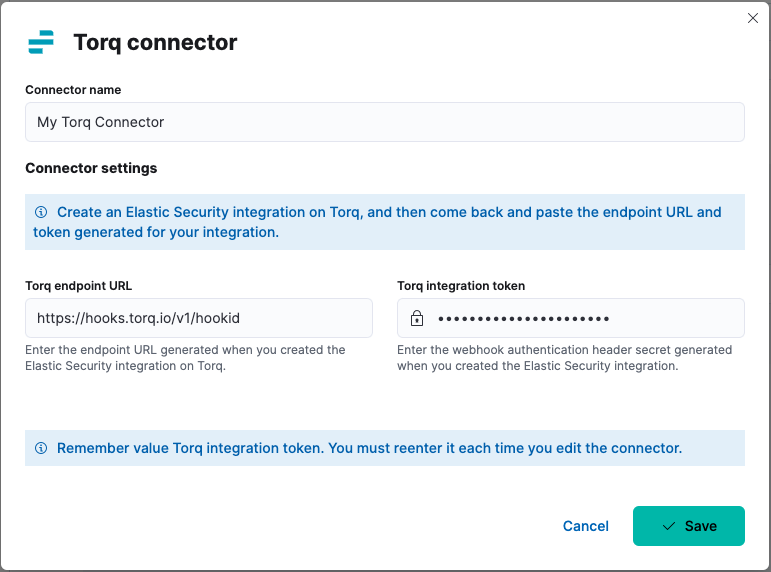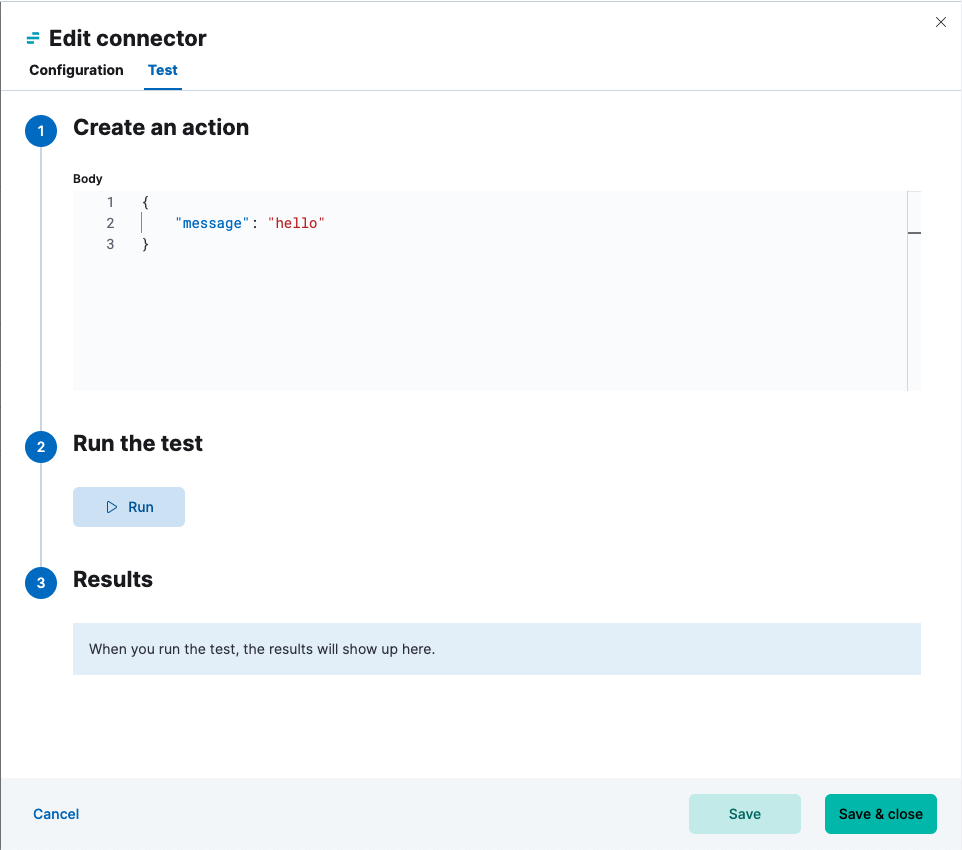Torq connector and actionedit
The Torq connector uses a Torq webhook to trigger workflows with Kibana actions.
Create connectors in Kibanaedit
You can create connectors in Stack Management > Connectors or as needed when you’re creating a rule. For example:

Connector configurationedit
Torq connectors have the following configuration properties:
- Name
- The name of the connector. The name is used to identify a connector in the Stack Management UI connector listing, and in the connector list when configuring an action.
- Torq endpoint URL
- Endpoint URL (webhook) of the Elastic Security integration you created in Torq.
- Torq authentication header secret
- Secret of the webhook authentication header.
Create preconfigured connectorsedit
If you are running Kibana on-prem, you can define connectors by
adding xpack.actions.preconfigured settings to your kibana.yml file.
For example:
xpack.actions.preconfigured:
my-torq:
name: preconfigured-torq-connector-type
actionTypeId: .torq
config:
webhookIntegrationUrl: https://hooks.torq.io/v1/somehook
secrets:
token: mytorqtoken
Config defines information for the connector type.
-
webhookIntegrationUrl - An address that corresponds to Torq endpoint URL.
Secrets defines sensitive information for the connector type.
-
token - A string that corresponds to Torq authentication header secret.
Test connectorsedit
You can test connectors with the run connector API or as you’re creating or editing the connector in Kibana. For example:

Torq actions have the following configuration properties.
- Body
- JSON payload to send to Torq.